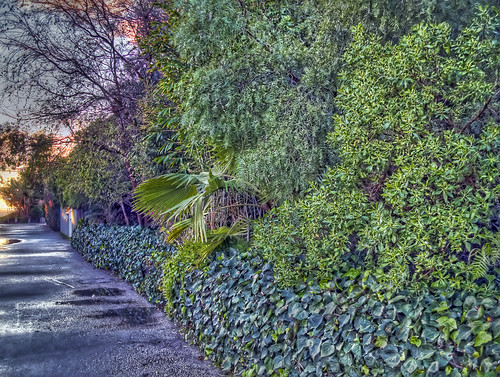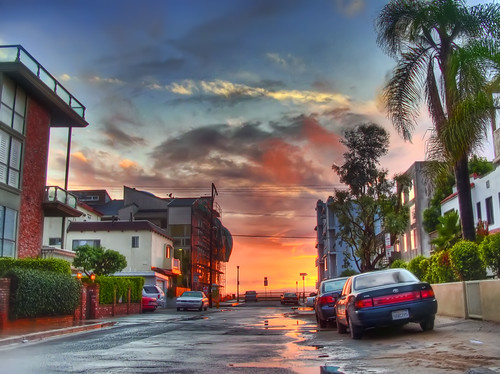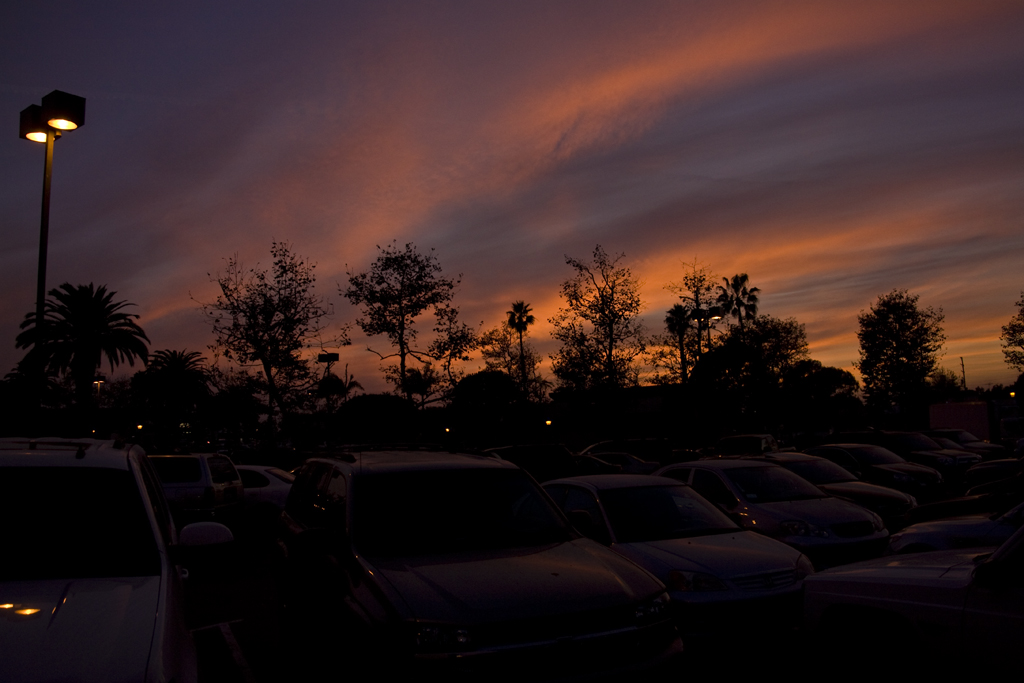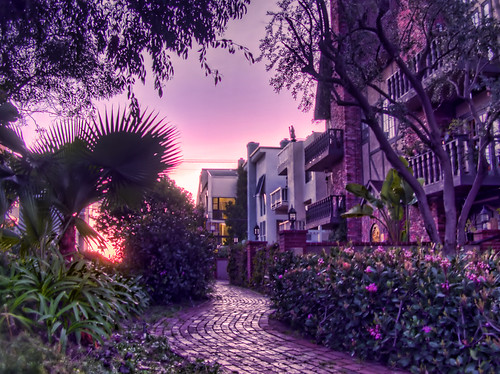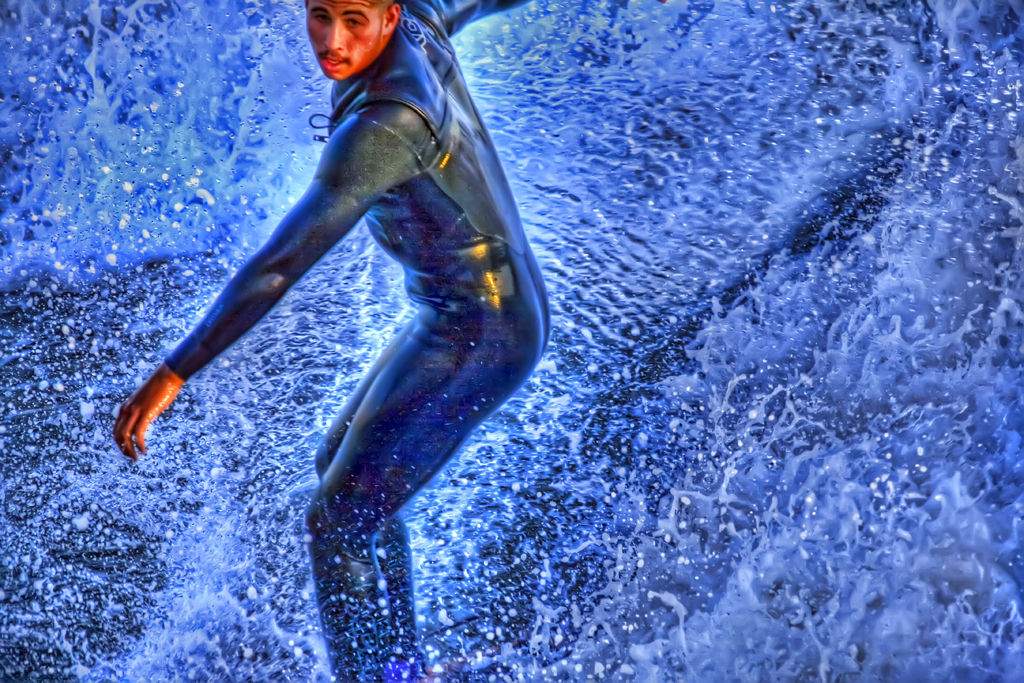
Often with a 500mm lens a moving person or object more than fills a frame. Such was the case with this surfer, eddie, as he approached the pier where I was photographing him.
It was early June. The days were long, the water warm and the waves were really holding up late in the day. This series of shots was taken just before sunset and were quite dark as I shot them at 1/500 of a second. This speed is necessary as these young surfers change directions so quickly they'd be a blur at slower shutter speed.
Eddie was well into a nice long ride when he began to whip back and forth, up and down the face of the wave.
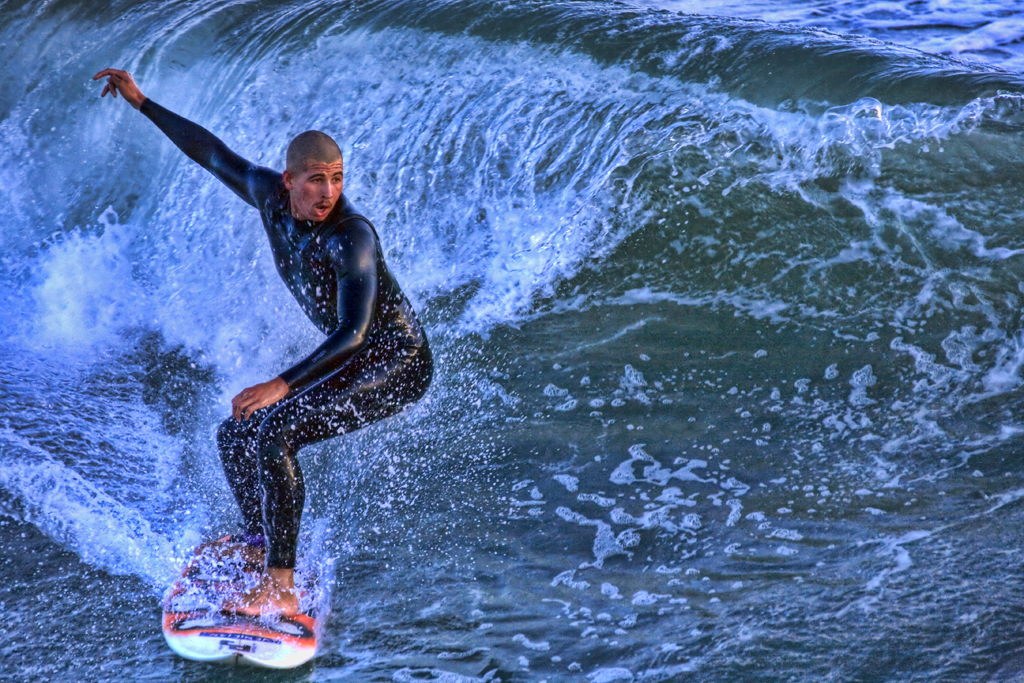
His next move was to turn back down. His centrifugal force left him parallel with the water's surface.
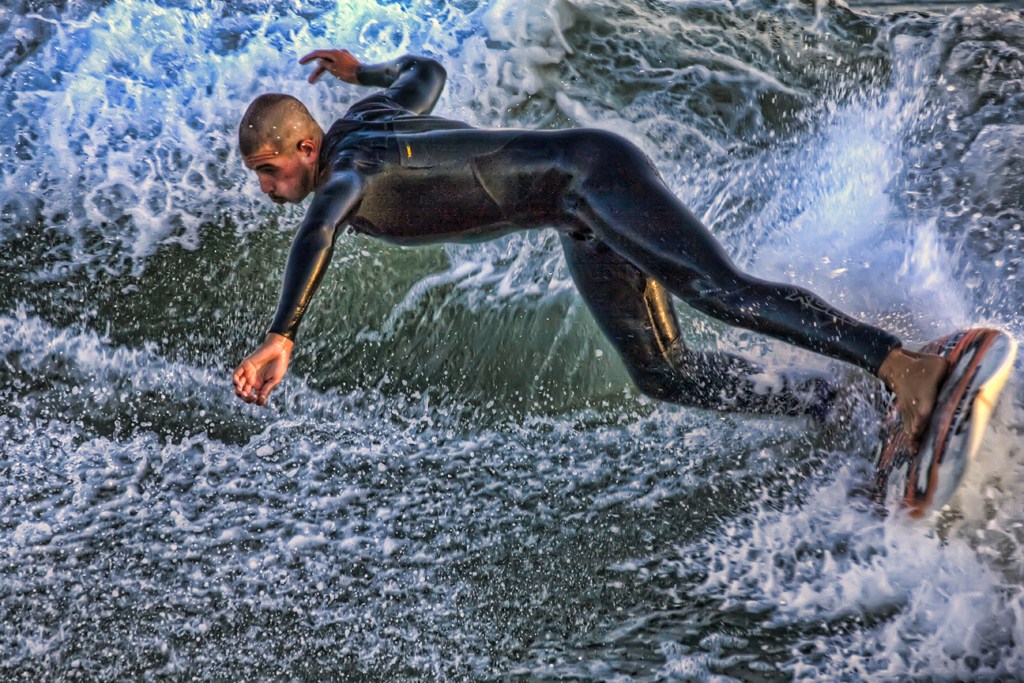
He finished off his turn, straightened up and filled the frame as shown the top of this post.
I used Lightroom to generate 2 brighter exposures and one darker one. I was limited as I was ending with shots that were 2 stops too dark so my HDR had to have a light boost. I used the exposure command to add 2ev 4ev and -2ev to the orginal shot. One the brighter images I turned up the noise suppression in Lightroom as it is superior to Photomatix or Photoshops noise filters.
I used the Photomatix plugin to generate the HDR from the 4 exposures as this dumps the TIF temp files when the HDR is made. I used detail enhancement with only a few options adjusted to tonemap the image.
I saved it as a 16 bit TIF which I took into photoshop to edit. Generally I shift the histogram toward the middle using whatever image adjustment options I can until I get a decent Bell curve. The result is what you see here.



